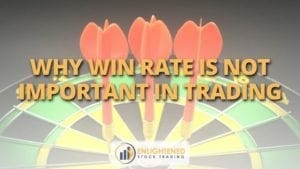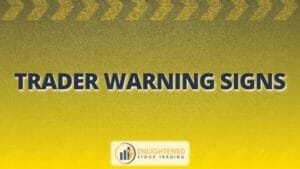When you design your system, you have to know what your exact entry rules are. We often focus on the indicators, but we miss the execution.
I don’t look intraday, I only look at daily charts. When I’m trading end of day systems, I download my data, I run my scans, I get my signals for the next day, and I’m always entering at the open the next day, almost always because that’s what I’ve back-tested. And the price that you should be looking for is the price that you’ve back-tested. Some systems will enter in your back test and you’ll say, “Okay, if this crosses over this, then buy at the open on the next bar.” If that’s what you’ve back-tested, then you’re going to trade exactly the same way, try and get as close as possible to the opening price. If you have a different idea, and you want to enter at the closing price, then you back test that and see how profitable it is. Or maybe you want to enter on a limit or a stop order, then you’re going to back test that. The answer is not simple, the answer is what did you back test in your system. If you back test it with an entry price at the open, then you should be trying to get in at the opening price, don’t necessarily try and make it better and certainly don’t wait for later in the day to let the price settle down because your system was designed and back-tested using the opening price as the entry point and your exit point.
You just want to act on the system. One of my favorite sayings for my students in the Trader Success System is when they ask a question, my response is “what would your system do?” If your system would enter at the open, you enter at the open. If your system would enter at the close, you enter at the close and so on. That’s how you deal with that. If the price spikes or drops dramatically from the close to the open, you have to ask yourself again, “What would my system do?” Because if you’ve back tested your system over 20 or 30 years, over several 1000 trades, and you coded your system to enter at the open, don’t you think that in that time, that there was a fair few trades where the price jumped up between the close and the open the next day, or gaps down between the close and the open next day. Absolutely, there was. All of those market behaviors are in your back test and what do you do? You follow what the system would do. The system says you buy at the open so if the open is gaped up, you buy at the open. If it gaped down, you buy at the open unless you got a rule in your system that invalidates that. If we go back to the fear that that might generate, if it’s gaped up, the fear might be, “Oh, I’ve missed out on the move. If I buy now it’ll fall and I’ll lose money. “What do you do with that fear? You observe the chart, it is “Oh, there was a big gap up. Maybe that’s not a profitable signal. Maybe I shouldn’t buy at the open if the open moves up beyond a certain level.”
You can then codify that, convert it to a rule, back test it and compare it to the system without that rule. If the system with your rule that avoids that gap up on your entry and is more profitable, then don’t take that trade. Don’t take those trades from then on, add that rule to your system and avoid that situation. If you do the back test and add that rule, that filter makes it worse, you just ignore that and you just take the trade. Just follow the system and what it says.
For more stock market questions, click here to find all my questions on YouTube









Share This
Share this post with your friends!